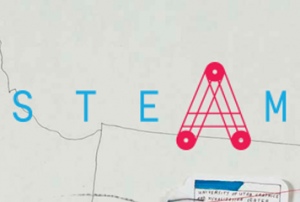 From the time I was an undergraduate physics major, I’ve also been interested in the creative activities intrinsic to art and design fields. Critique, conceptualization, and iteration are all useful practices for developing new ways of seeing reality. Good artists and designers understand the value of deconstructing a subject, evaluating its components, and using that information to guide future directions. These “critical thinking” skills are increasingly in demand in all sectors.
From the time I was an undergraduate physics major, I’ve also been interested in the creative activities intrinsic to art and design fields. Critique, conceptualization, and iteration are all useful practices for developing new ways of seeing reality. Good artists and designers understand the value of deconstructing a subject, evaluating its components, and using that information to guide future directions. These “critical thinking” skills are increasingly in demand in all sectors.
The STEM-to-STEAM (Science, Technology, Engineering, and Math + Art = STEAM) movement being championed by RISD’s John Maeda aims to enhance U.S. economic competitiveness by cultivating the creative and critical thinking skills that innovative companies are seeking. National Laboratories are also leaders in innovation, but there is a notable absence of artistic and design collaboration in the R&D process.
This effort could lead to very exciting transformations in U.S. industry and research. One question I’ve been considering lately is how to incorporate STEM-to-STEAM beyond the K-12 setting to the scientific workplace.